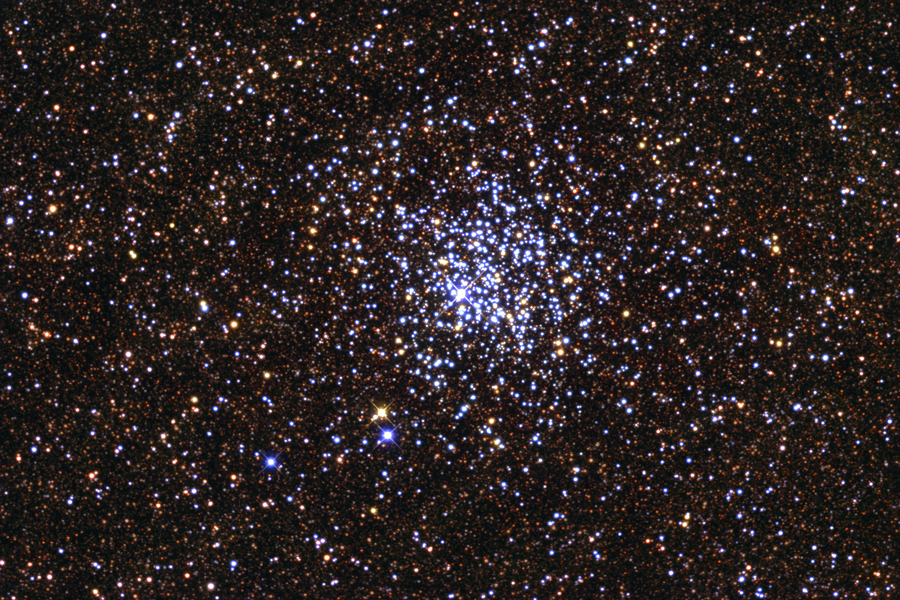This image was produced with a RCOS half meter telescope and a SBIG STL-11000 camera between August 13- 17, 2007. Exposure times: 130 minutes Luminance, 45 minutes Red, 27 minutes Green and 54 minutes Blue (All 1X1) |
The Wild Duck Cluster
|
|||||||||||||||
|
Astrophotography has both challenged its practitioners to faithfully record nature and encouraged, at least, a few to exploit aspects, that the ever evolving technology offers, like color. This has lead to a divergence from, what some define as, a more natural representation. The use of intense tints is an example often cited. Personally, I have my doubts about that assertion because (I have also found that) people outside our hobby prefer pictures with high contrast and bright, noiseless hues! But, this is not the point I want to make. Please, indulge the following explanation.
A similar situation occurred in France during the late 1800's when a group of artists began exhibiting their works outside of the Salon- the official art exhibition site in Paris during this period. These were the Impressionists and their rallying cry was "true to nature", because they were also realists. Realism, to an Impressionist, meant recording the most subtle sensations of reflected light and color while remaining true to their personal sense of wonder. Impressionist painters applied color in tiny strokes as a method to display their sensations openly, to keep the color intense and to let the viewer's eye combine the hues. The bright colors and active participation of the viewer approximated the experience of natural light scintillation. But the official theory that color should be dropped pure on the canvas instead of being mixed on the palette was only respected by a few and only for a few years. In fact, Impressionism is more a state of mind than a technique; thus artists other than painters have also qualified for the moniker of Impressionist. I also believe it's curious to note that the more an Impressionist studies their subject, the more they notice. This leads many to re-visit the same subject again and again in an attempt to capture something new that was previously overlooked. Claude Monet painted thirty-one versions of the ornate Gothic architectural masterpiece, Rouen Cathedral, over a period of two years, for example.
Impressionist painters are also fascinated by the instantaneousness of time, working furiously to finish each canvas so that their painting captures the scene's momentary essence. Well, cameras, telescopes and computers can replace eyes, palette knives, oils and canvases. A several hour exposure snapped from the infinite span of eternity is no less ephemeral than the hastily painted perception of a brief day's moment.
Therefore, as with painters of the late 19th Century, there are modern astro-Impressionists who are also concerned with their personal and subjective sensations- reality is based on what the photographer not only sees but what they believe and what they feel. After all, we experience life looking through a lens smudged with emotions, some would argue. Concern for producing an exact reproduction of the subject, as it would look to an orbiting visitor, is therefore tempered and accentuated by its impact on the Impressionistic imager. Their hope is to share a lasting impression with their viewers no less valid than the life bestowed to the stony facade of a Cathedral by sunlight. In short, for some, including me, this is art. |
|
|||
Home page
